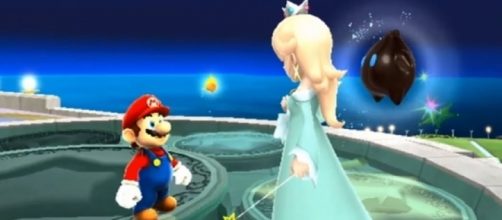With "Super Mario Odyssey" having just come out to rave reviews, it seems poetic that its release should coincide with the 10th-year-anniversary with another one of his most innovative titles. I speak of none other than the anti-gravity platforming romp that is "Super Mario Galaxy." Mixing the tried and true "Mario" platforming formula with spherical worlds, orchestral music, and Motion Controls, "Galaxy" not only breathed new life into the franchise but also in the 3D platforming genre in general.
While recent titles such as "Yooka Laylee," "A Hat in Time," and "Crash Bandicoot N-Sane Trilogy" have proved that the 3D platformer is still a viable market, many critics and gamers in 2007 declared the genre to be dead.
"Galaxy" proved those dissenters wrong and then some.
Is our princess on another planet?
Storywise, "Galaxy" is very similar to previous titles on the surface. The Mushroom Kingdom is holding the annual Star Festival and Princess Peach has invited Mario to her castle to celebrate. Predictably, Bowser and his minions show up to rain on the parade and kidnap the princess. When Mario tries to stop the armada, he gets blasted out into outer space. Fortunately, he awakes to discover a race of star beings led by the benevolent Princess Rosalina. Together they set forth to save Peach and thwart Bowser's plans to take over the galaxy.
While the main story is standard "Mario" fare, the hidden backstory of Rosalina and her relationship with the star people is surprisingly heart-wrenching.
This is revealed in bits by the storytime sections in the hub world. While completely optional, these sections give a bit of poignancy and heart to what would otherwise be another cartoony platformer.
Prepare for lift off
The basic gameplay of "Galaxy" is virtually the same as previous titles such as "64" and "Sunshine" with the polish and precision gamers expect from Nintendo.
Running, jumping, and flipping feels just as cathartic as they did back in 1996. What's new to this entry is the level design. Each planet that Mario blasts off to has its own gravity and shape. Sometimes players will have to platform upside down or even in reverse. Other times, the game will task players to hop from one planet to another.
Some planets are a simple sphere, but others can take on wild geometries that play with gravity.
If that wasn't enough, the game also made use of the Wii's motion controls. Memorable sections include a race where players had to tilt the remote to steer a manta ray and another level where players pulled the remote back to launch Mario like a slingshot. While the motion controls could come off as gimmicky, they weren't too intrusive and never overshadowed the superb platforming.
'Galaxy's' influence on 'Odyssey?'
After "Galaxy 1," Nintendo seemed content to just play it safe. "Galaxy 2" was just more of what made the first game great and "Super Mario 3D World" was very much a "greatest hits" amalgamation of previous "Mario" tropes and gameplay elements.
However, with the Wii U's financial failure and the flops that were "Star Fox Zero" and "Paper Mario Color Splash," it was clear that things needed to be shaken up if the company was to survive. "Breath of the Wild" and "Super Mario Odyssey" are very much the shots in the arm that The Switch needed to elevate itself from its predecessor.
Playing "Odyssey" reminded me of how "Galaxy" was able to evoke feelings of the past while delivering an experience that felt entirely new.


